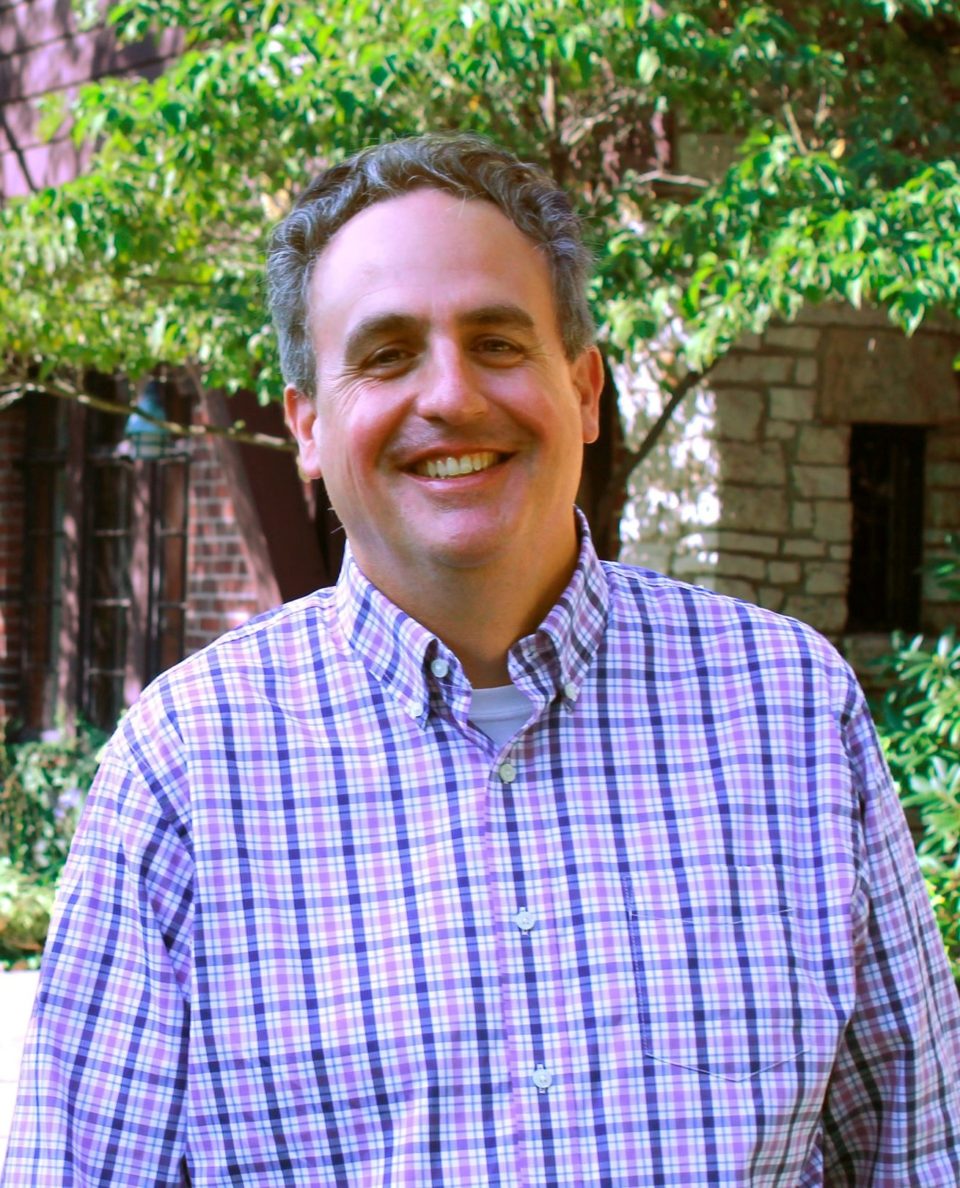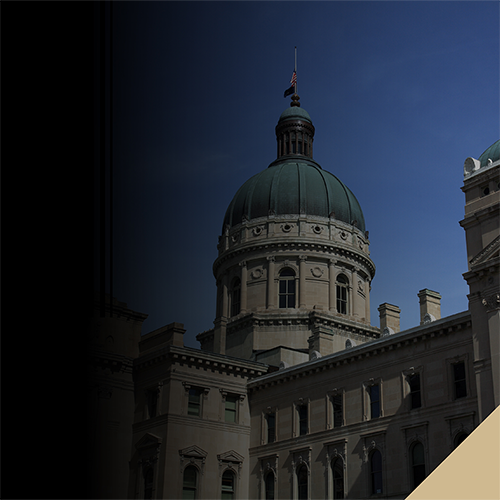Belonging and Making a Difference in a New Year

~by Michael Wilcox
Assistant Director and Program Leader for Community Development / Purdue Extension
Associate Director / North Central Regional Center for Rural Development (NCRCRD)
~ Kayla Wright, Community Development Educator, Marion County Extension, Co-author
Last month I discussed a personal journey involving lifelong learning and giving thanks. This month, I am looking forward to the New Year by reflecting on a difficult lesson that has highlighted the need to foster belonging and pave paths to make a positive difference in the lives of all community members.
Recently, I shared a personal story with colleagues from across the country on a conference call. I discussed the complex feelings I felt when reading challenging resources about the struggle for equal rights in the United States. The facilitator who led the meeting is a mentor, and I consider him a friend. He is also an expert in diversity, equity, and inclusion. As always, he listened intently and then responded. I didn’t anticipate what would come next.
Another colleague on the call summarized my mentor’s response this way:
“How do we handle ourselves when shame gets triggered? Shame forces us inward and disconnects us. But we, as humans, are social animals who long to be connected. The antidote to shame is to name it and develop empathic concern. See what we can do from our positions of power and privilege. And, practice mindfulness – how will we show up? Will we be in denial and closed off, or will we be curious and open to gaining new understanding?”
Honestly, I was taken aback when my mentor connected what I was feeling to shame. But, this is where my quest for lifelong learning needed to kick in (again).
Brené Brown has done extensive work on the topics of shame, vulnerability, and accountability. She defines shame as: “The intensely painful feeling or experience of believing that we are flawed and therefore unworthy of love and belonging—something we’ve experienced, done, or failed to do makes us unworthy of connection.”
Ultimately, shame is something personal and individual. Shame forces us to retreat, the opposite of belonging. The feeling of shame does not produce positive or helpful results. The true power comes when we look to understand the emotions that come from shame.
Why do we feel the way we do? How do we learn to shift our negative feelings to produce something positive?
Brown writes, “When we feel vulnerable, the only choice we have is how we handle those feelings of being terrifyingly, painfully exposed. Maybe we turn them into rage, disconnection, or perfectionism. To transform them into courage, we must learn how to recognize them, feel them, and cope with uncertainty and risk. When you know what you’re feeling and why, you can slow down, breathe, pray, ask for support….”
That is what I did. I slowed down, took a deep breath, and followed the path to my shame.
When I was in elementary school, children from our side of town (West) were bused to the more affluent East side of town for school. While the distance wasn’t great, it still provided lots of time for student-to-student ‘interaction.’ Some of this interaction was fun (who doesn’t have fond memories of riding the bus?!?) and some quite the opposite (who doesn’t have awful memories of riding the bus?!?). In first grade, I took notice of a girl from my grade. Her name was Lisa. We had fun talking about our day, and I couldn’t help notice her pretty pigtails held together with colorful hairbands. Lisa had beautiful brown skin and her pigtails were often braided. I was smitten…first-grade level smitten.
Lisa lived on the other side of the neighborhood and was always dropped off first. One day as I was getting off the bus, my next-door neighbor (he was in third grade) came up to me and said, “You’re a n***** lover.”
I had no idea what he was talking about, but I knew it did not make me feel good, so I ran into my house crying. I explained to my mother what had happened, and she was flabbergasted. My mother explained that some people are ignorant and treat people differently based on how they look. My mother told me to stay away from my neighbor and reminded me that we need to treat everyone with love and respect.
From that moment forward, I was aware of race.
Fast forward a year or two later. Lisa had moved and a solid group of neighborhood friends surrounded me. We even had a Big Wheel Gang! (it was the 1970’s after all…)
On a lovely sunny day, we were playing at a friend’s house in the backyard. Through the shrubs that separated one yard from another, we saw that new neighbors were moving in. We couldn’t believe our eyes. The family was Black. After Lisa’s family left, our neighborhood was all White (at least that is how I remember it). This new family appeared to have the same middle-class trappings as us, but they looked different. Their two children, brother and sister, were checking out their new backyard. To this day, I do not know what was going through our young minds, but we decided to hide behind the shed and yell through the bushes and across the yard that they should go away. Of course, this ran counter to everything my family had instilled in me as a child, but it happened anyway and was beyond shameful. I still carry the shame to this day.
The young girl, Ginger, was my age. She has a lovely smile. But, that day, she wasn’t wearing it. I remember Ginger and her brother were confused and concerned. I remember their father coming out and telling us to leave his children alone.
This was all a long time ago. The details are fuzzy, but I remember something clearly. Days, weeks, or months went by – I am not certain – but we had warmed up to Ginger and her family, and somehow, they found a way to let us into their lives even after our reprehensible conduct. So, I took the opportunity to go by their house one day to see if Ginger could play outside. Her mother answered the door and explained that Ginger was busy getting her hair done, but I could come in and keep her company during the process – and I remember it being a process indeed. After she was done, we looked at magazines (I think Ebony and Jet) and hung out.
Though it may sound like just another day, it was transformative for me. Instead of shunning me for my actions, Ginger’s family responded with openness, compassion, and integrity as they knew I was a child, and I appeared to have good intentions. Looking at the magazines showed me that my own world was not very diverse. It made me question why many of the people in those magazines were unfamiliar to me. Like most children my age, I watched television, went to the movies and listened to the radio, why weren’t these folks there in my everyday life? The fun and laughs aside, the most important aspect of that day was that, by the time I left, I had realized that Ginger had forgiven me.
Ginger and I sang in choir together throughout our entire primary and secondary school careers. Her talent was prodigious. Ginger was a ‘Creative,’ and I definitely was not. I have good memories and carry them to this day. More importantly, Ginger has always had a special place in my mind and heart as she, perhaps unknowingly, opened both for me.
Having an open mind and heart provides the humility that lifelong learning needs to take root. And lifelong learning is where I have channeled my shame. Using it as some of the fuel I need to seek out challenging resources and be the most compassionate husband, father, family member, community member, and Community Development Extension professional that I can be.
My learning started with something close to home. In contrast to my family history, life for people of other races in my hometown of Saratoga Springs, New York was far more complicated. My high school classmate, Carol R. Daggs ~ Jazzage, explores personal examples in her beautiful book, “Saratoga Soul Brandtville Blues.” Like the story of Solomon Northup [famously (now) kidnapped in Saratoga in 1841 and sold into slavery], we Saratogians have tended to focus on the Health, Horses, and only certain aspects of our History. But, thankfully, through the work of Carol and others, that has begun to change.
I then turned my attention to national examples. I learned how redlining determined who could live where (see “The Color of Law”) and sundowning determined where and when you could be in certain places. A childhood friend’s father opened my eyes to the history of highways being built across the country, bringing cities and towns together while dividing and harming communities of color (see “Divided Highways” (esp. @ 45:07-53:11)). And, I learned about how access to financing, education, housing, voting, jobs, and government benefits has historically differed by race and class (see “The Sum of Us”).
My recent reading, listening, and discussions with others have helped me deepen my appreciation for how hard dealing with these issues can be and better recognize the significance of the Civil Rights movement and the groundbreaking legislation of the 1960s. Progress had been made within our lifetimes.
However, has it been enough? Absolutely not.
Am I complicit in the wrongs of the past and present? It is complicated.
By definition, complicity assumes direct involvement. And this is what my mentor was trying to warn me about. If you are “doing the work,” and that discovery process unveils shame because of your past actions or as you recognize that you are a beneficiary of the way things are (an origin of complicity), then you have a choice. Unfortunately, many choose to shut down, deflect or argue. However, like my mentor said, those who ‘gain understanding’ need to decide to ‘show up.’
People who choose to deflect or argue might consider that when people invoke ‘color blindness’ or proclaim ‘all lives matter,’ it can be extremely hurtful for people whose lived experience runs counter to these sentiments. Today, the daily lives of millions of Americans who are Black, Indigenous, and People of Color (BIPOC) are filled with reminders that they are BIPOC, in ways that they can celebrate and ways that leave them feeling frustrated, angered, or possibly in mourning. Meanwhile, many members of the dominant culture live what they consider ‘normal’ lives and may choose to ignore or disbelieve that life is not the same for everyone. When reality begins to sink in, this can provoke the feelings of guilt and shame that my mentor brought up. For BIPOC folks, they may ask the same question that the band Living Colour asked back in 1988, “Which Way to America?”
So, how might one gain understanding and find a way to show up? My journey highlights shame/guilt, vulnerability, accountability, empathic concern, and belonging phases. It is nonlinear and looks different for everyone.
As I have mentioned, my experiences have opened my mind and heart to the possibility of being a change agent. What is next? Vulnerability and Accountability. However, it is important to understand that this is NOT about calling people out. For empathic concern to be fostered and grow throughout a community, we must call each other in.
John McWhorter puts it this way:
“Feeling guilty lent him [sic] something personally fulfilling and signaled that he was one of the good guys without obligating him further. The problem is that one can harbor that feeling while not actually doing anything to bring about change on the ground…
…Especially because people can actively foster change without harboring (or performing?) a sense of personal guilt for America’s history. Black America likely will not overcome without some white assistance. But I’m not convinced that the way this happens is with white people’s cheeks burning in shame over their complicity. Maybe they can just help.”
Theoretically, it sounds simple enough. However, it is not easy. How could it be? You must be prepared to be uncomfortable and be prepared to act.
Fortunately, acting can result in benefits for everyone, as author Heather McGhee convincingly argues in her book “The Sum of Us: What Racism Costs Everyone and How We Can Prosper Together.” McGhee outlines how the “Solidarity Dividend” represents an opportunity for all Americans to benefit from policy changes that offer a pathway to equity. In addition, she dispels the myth that addressing racial disparities is a zero-sum game where the beneficiaries gain from the losses incurred by others. In other words, there does not have to be winners and losers when it comes to dealing with inequities in our society. But, we need to recognize that there are inequities and that everyone needs to hold themselves accountable and foster empathic concern.
In a podcast, Brown says, “Being held accountable for racism and feeling shame is not the same thing as being shamed.” Shaming is a tool to make someone notice their flaws and shortcomings. Accountability is a tool to accept oneself and personal responsibility. When someone feels shame from racial accountability, the next step is to analyze what they feel and why they feel that way and accept it as it is. This is not an easy task, but one that requires intention and dedication. With more self-acceptance comes more group acceptance because we feel comfortable being ourselves and accepting others as themselves. Like the Platinum Rule says, “Treat others as they wish to be treated.” This strengthens our position to act and motivates us to do it from a compassionate AND accountable base. This is a necessary condition for empathic concern.
Most discussions of diversity, equity, and inclusion stop here, with the actions taken to make certain that there is diverse representation, that equity is fostered (in terms of power, resources, etc.) and/or the thoughts and perspectives of others are included. Let’s think of a Venn Diagram representation (three interconnected circles). We must consider the ramifications if we only act on two of the three (e.g., focusing on diversity and equity while not being inclusive). In these cases, there will be deficits, and you (or your community or organization) will not achieve your goals.
What is the expected outcome if you successfully address diversity, equity, and inclusion? Belonging.
Once again, Brené Brown has some thoughts on this topic as well. She explores how people shift to feeling worthy of love, connection, and belonging. First, Brown explains that we have to learn the power of vulnerability and accountability. Brown says in the October 2012 Personal Excellence magazine article, Love and Belonging, “Belonging starts with self-acceptance.” To make the accountability shift, we must acknowledge what we feel and why we feel that way. Then, when we start accepting ourselves as we are, we can start accepting others as they are – cultivating a solid foundation for accountability and belonging.
Andrea Lipton suggests that cultivating belonging is based on awareness, authenticity, and accountability from the workforce perspective. Similarly, cultivating community belonging starts with you. And, as my mentor said, you will need to be mindful, curious, and open to gaining new understanding – a lifelong learner.
In this framework, accountability and belonging are shared by everyone. People of different races, classes, etc., may get to this point from many pathways, but this is where the collective ‘we’ need to arrive – a point where we all belong.
My journey towards belonging started negatively by trying to create an environment that excluded others and devalued diversity. Ginger and many others helped open my heart and mind so I could personally make a positive difference in the lives of the people around me. They also opened the door for me professionally, so I could put my energy into community development work that meets the core “Principles of Good Practice” of the Community Development Society:
- Promote active and representative participation toward enabling all community members to meaningfully influence the decisions that affect their lives.
- Engage community members in learning about and understanding community issues and the economic, social, environmental, political, psychological and other impacts associated with alternative courses of action.
- Incorporate the diverse interests and cultures of the community in the community development process and disengage from support of any effort that is likely to adversely affect the disadvantaged members of a community.
- Work actively to enhance the leadership capacity of community members, leaders and groups within the community.
- Be open to using the full range of action strategies to work toward the long-term sustainability and well-being of the community.
With these principles in mind, think about what you can do to foster belonging. And, given the time of year, consider some of the common themes across our diverse traditions. From light and togetherness to love and empathy to survival and resilience, these themes serve as a call to reflect and give. Many years ago, one of the greatest gifts of all was given to me, forgiveness.


